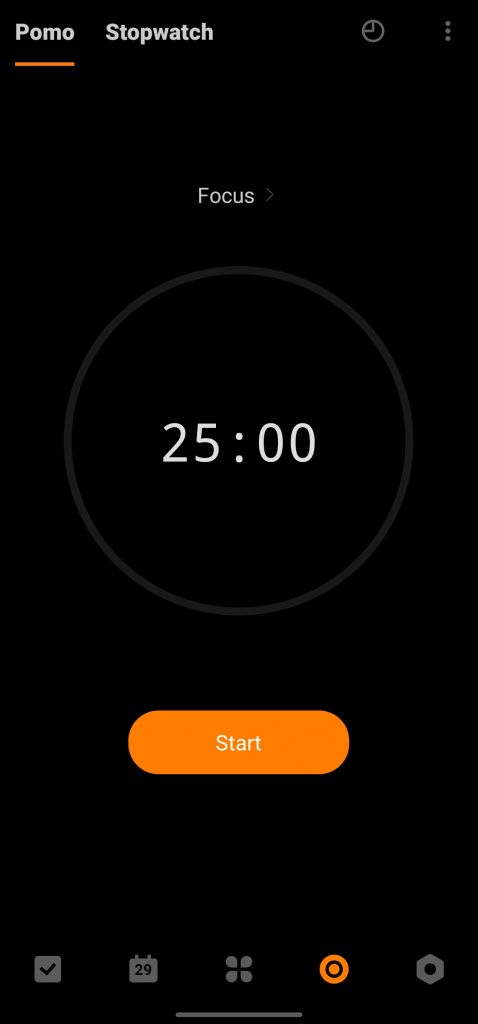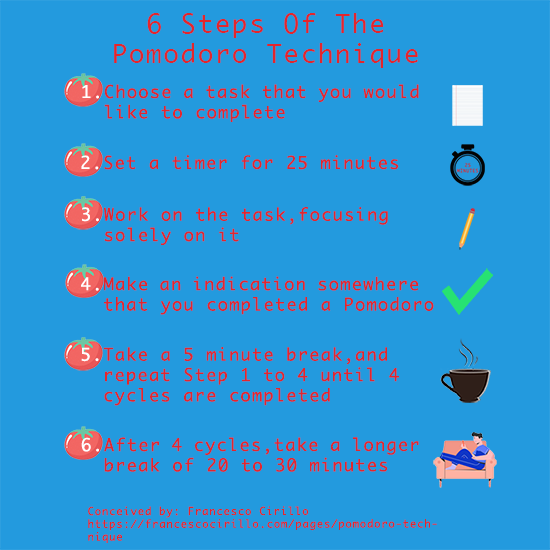28 Nov 2018 was the day I realised the importance of time management. It was the deadline for my internship assessment as an Events Management student in the Institute of Technical Education.
As I started working on the assignment only at the eleventh hour, I missed the deadline. Besides having 10 per cent of my marks deducted for late submission, I was also upset with the low-quality work that I produced.
After that incident, I was determined to better manage my time. I chanced upon a time management strategy called the Pomodoro technique in TickTick, a productivity app that I had installed in my smartphone, and decided to give it a try.

What’s the Pomodoro Technique?
The Pomodoro Technique was created by Francesco Cirillo, the Italian founder of Cirillo Consulting, when he was still in university.
Here’s his strategy: Identify a task that needs to be done, give it your full attention for the next 25 minutes, take a 5-minute break, and repeat the process until the task is done.

Did it help me?
I’ve been following the Pomodoro Technique since I joined the polytechnic, where I have many more projects and deadlines.
This technique has helped me meet all my deadlines and have a more structured approach towards school work. I feel like I have more control of my time.
However, I noticed that the technique is only effective when I am working alone.
During the 25-minute block, I must block out all forms of interruptions and distractions, including phone notifications and random thoughts that popped up in my mind.
I also realised that the five-minute break sometimes breaks my momentum. Hence, I’ve experimented with having longer Pomodoro blocks for certain tasks that require sustained focus.
Why does Pomodoro work?
Over a Zoom interview, Mr Michael Podolinksky, the American author of the bestselling book, Productivity: Winning In Life, shared why this technique works, especially for higher order thinking tasks.
People tend to get into the flow state 10 to 13 minutes after working on a task, he said. On the other hand, trying to refocus after a minor interruption, such as checking a phone notification, can take 11 to 23 minutes.
“The magic is in us having the discipline and the habit of being able to work that block of time without interruption and be focused on one central thing. That’s the magic of it,” said Mr Podolinsky, 65.
Following the technique is also a good way to separate us from the technologies that get in the way of our productivity. “Getting rid of those distractions is critical,” he said.
Mr Podolinsky also suggested that it’s important to work in a conducive, distractions-free environment.
“My mentor, Jim Rohn, said: ‘Don’t be at work in the bathtub. And don’t be in the bathtub at work,’” Mr Podolinsky quipped.
Jeremiah Tang, a Biomedical Science student at Singapore Polytechnic, said he finds Pomodoro a “really good technique”. He added that the technique helps motivate individuals to start work right away, as they can look forward to the break.
However Charlene Goh, a 16-year-old student who runs the YouTube channel studyrui, feels that the Pomodoro Technique may cause students to prioritise the quantity of time spent studying, instead of it’s quality.
Charlene said: “I guess it leads the user to a false sense of security. Because you are like ‘Oh, I study for like, five hours today that means I’m super prepared’. But actually [for] the five hours … all they do is just read a textbook, and nothing goes in”.
“I think the Pomodoro Technique is not the solution to all of unproductivity and I think it will work better when it complements other stuff or [when you] integrate it into other different ways of studying,” said Charlene.
Proofread By: Ruth Loo Hui En
